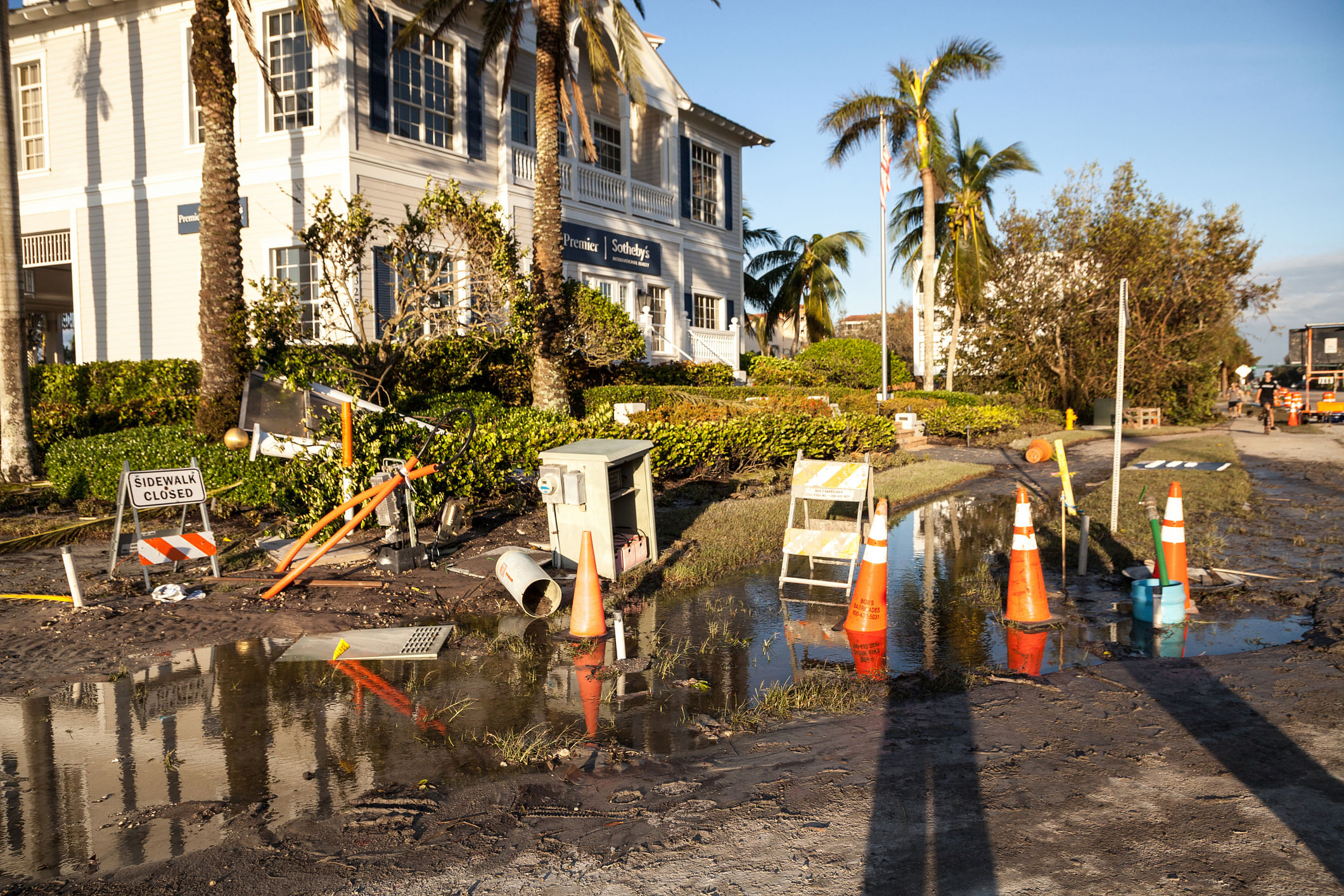
Oct 31st, 2024
Rain or Shine: How Stormwater Compliance Helps When Natural Disasters Strike
By: Megan Meadows
It may not seem entirely obvious that simple best management practices like tarping outdoor equipment, covering trash cans and sweeping dust and scraps from industrial activity can make a big difference when a catastrophic weather event or natural disaster hits—it is those measures that filter contaminants before they enter waterways and when storms hit. But, storm water compliance, even the small measures that seem like overkill, do more than keep dangerous pollutants and debris out of the water. Not only that but the purpose of storm water regulations is also to protect against erosion and keep materials and equipment safe. This is especially crucial in California.
The harsh lessons learned from recent natural disasters like Hurricanes Helene and Milton highlight the necessity of prevention in anticipation of extreme weather events. California has experienced severe flooding from atmospheric rivers and tropical storms, with impacts similar to what was seen with Hurricane Helene in 2024. That storm, while affecting the Southeastern U.S., serves as a reminder of how intense rainfall leads to devastating flooding, and the catastrophic loss of property and life. Similarly, California’s infrastructure, including roads, bridges, and public utilities, face significant threats during storms. And when stormwater systems function effectively, they allow emergency services to operate more efficiently during disasters. In a state where the effects of climate change are felt acutely, embracing stormwater compliance is not just a regulatory requirement—it’s a vital strategy for survival and recovery in the face of inevitable natural disasters. Effective stormwater management can make all the difference when nature decides it’s our turn, again.
It’s the understatement of the decade to say that California is no stranger to natural disasters—the usual suspects include wildfires, earthquakes, severe rainstorms, and sometimes even tsunamis and hurricanes. The increasing intensity of rainfall events accompanies some of these events, including our favorite weather phenomenon, the atmospheric river. This means effective stormwater management is more critical than ever. Stormwater compliance, which involves adhering to regulations and best practices for managing runoff, plays a vital role in not merely protecting our streams, rivers and oceans from pollutants, but is also a critical component for enhancing community resilience and minimizing the impacts of increasingly devastating natural disasters. In southern California, heavy rain leads to rapid runoff due to the region's urban and naturally arid landscape. Impermeable surfaces like roads and parking lots prevent water absorption, and runoff collects pollutants and debris as it flows. Stormwater flows into rivers, carrying numerous pollutants, including oils, heavy metals, fertilizers, and trash, and that contamination poses big risks to water quality, aquatic life, and public health.
In California, stormwater compliance includes a suite of strategies included in the Industrial General Permit mandated by the National Pollutant Discharge Elimination System (NPDES) permit program (the “Permit”). Many of our clients are obligated to operate within stringent, sometimes onerous requirements set out in the Permit. However, many in the regulated community aren’t aware that the Permit applies to a wider swath than just industrial operations or construction projects. In fact, local agencies and government works are required to develop comprehensive stormwater management plans. This includes incorporation of Best Management Practices that aim to slow down, capture, and filter stormwater before it can overwhelm the environment. Stormwater management systems, both on a small and large scale, if not maintained, become strained under extreme conditions, leading to potential failures and increased flooding in urban areas. When natural disasters hit, the measures that facilities and municipalities are already required to take are critical in alleviating the ultimate impact of flooding, mudslides and even water main breaks from earthquakes. The Los Angeles River and other rivers and streams may exceed their banks, or dams may fail, causing harmful and dangerous impacts to communities and ecosystems.
It may seem counterintuitive that stormwater management is just as important in the dry months. California’s varied topography makes it particularly susceptible to erosion, especially after wildfires that strip away vegetation. And as fires are only getting to impact larger and larger areas size, they cause widespread loss of that vegetation that would otherwise absorb the rainfall in the winter months. Stormwater compliance in the drier parts of the year includes erosion control practices, such as silt fences and sediment basins, that stabilize soil and protect landscapes and infrastructure. Communities in Florida know the importance of erosion control measures. While it might not appear as dramatic as disappearing coastlines, in California, effective stormwater management systems can absorb and redirect excess rainfall, significantly reducing the risk of mudslides and flooding. Natural disasters cannot be stopped, but precautionary measures, including compliance with state stormwater regulations, ensure that communities are preparing in advance to handle the effects of intense storms.